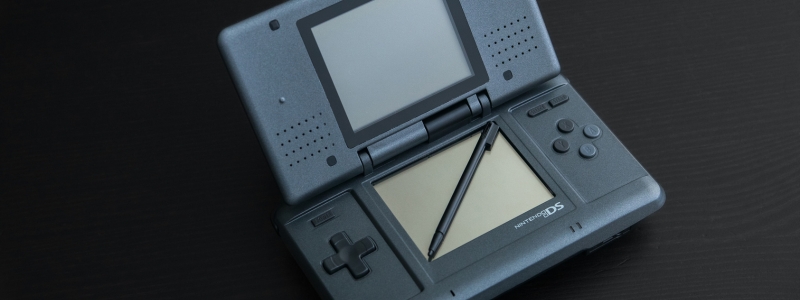Retro Tech: Nintendo DS
Multi-generational appeal

Share This Post
The Nintendo DS (Dual Screen) is a handheld gaming console developed and manufactured by Nintendo. It was first released in North America on November 21, 2004. Subsequently, it became available in other parts of the world, with releases in Japan (2004) and Europe (2005). The Nintendo DS was a significant departure from previous handheld gaming devices. It featured a unique dual-screen design, with the bottom screen being a touchscreen. This innovative feature allowed for new forms of gameplay and interaction, opening possibilities for touch-based controls, stylus input, and dual-screen experiences. Have a look at the original Teardown on this device in the TechInsights Platform.
The console also introduced a built-in microphone, Wi-Fi connectivity, and multiplayer capabilities, enabling players to engage in wireless multiplayer gaming with other DS users. It offered backward compatibility with Game Boy Advance (GBA) games, giving players the ability to enjoy titles from the previous handheld generation.
The Nintendo DS quickly gained popularity and became one of Nintendo's most successful gaming consoles. Its unique features and diverse library of games attracted a wide range of players, including both casual and hardcore gamers. The console appealed to many demographics with games that catered to various interests and skill levels.
The DS library included a mix of innovative and well-established franchises. Some notable titles for the Nintendo DS included New Super Mario Bros., The Legend of Zelda: Phantom Hourglass, Animal Crossing: Wild World, Brain Age, Pokémon Diamond Version, and Pokémon Pearl Version. These games showcased the console's capabilities and contributed to its widespread appeal.
In addition to gaming, the Nintendo DS offered various nongaming features. It included PictoChat, a built-in messaging and drawing application that allowed users to communicate wirelessly with other DS consoles within a short range. The console also supported media playback, such as music and video playback, although these features were not as prominent as the gaming aspect.
The success of the Nintendo DS led to the introduction of several hardware iterations, including the Nintendo DS Lite in 2006, which featured a slimmer design, improved screens, and longer battery life. Later iterations included the DSi, DSi XL, and the 2DS, each offering new features and design improvements.
Overall, the Nintendo DS revolutionized handheld gaming with its dual-screen design, touchscreen controls, and innovative features. It offered a wide range of gaming experiences and became one of Nintendo's best-selling consoles. Its impact on the gaming industry can still be felt today, as it paved the way for subsequent Nintendo handheld consoles like the Nintendo 3DS and the Nintendo Switch Lite.
“The Nintendo DS was a handheld game console launched globally from 2004 and was the main competitor to Sony’s PSP (PlayStation Portable) during the seventh generation of video game consoles. It introduced distinctive new features to handheld games, two LCD screens (the bottom one being a touchscreen), a built-in microphone and support for wireless connectivity. The DS also offered the ability for multiple DS consoles to directly interact over Wi-Fi within a short range without the need to connect to an existing wireless network. The DS was first marketed as a complement to Game Boy Advance family and GameCube, but backward compatibility with Game Boy Advance titles and strong sales established it as the Game Boy successor. In 2006, Nintendo launched the slimmer and lighter DS Lite with brighter screens and a longer lasting battery, followed in 2008 by the DSi, another redesign with several hardware improvements and new features, and finally a larger version called DSi XL. All DS models combined have sold 154 million units, making it the best-selling Nintendo system, the best-selling handheld game console, and the second best-selling video game console of all time, behind Sony’s PlayStation 2.”
- Andreas Koehler, Director, Connected Home Devices, TechInsights









